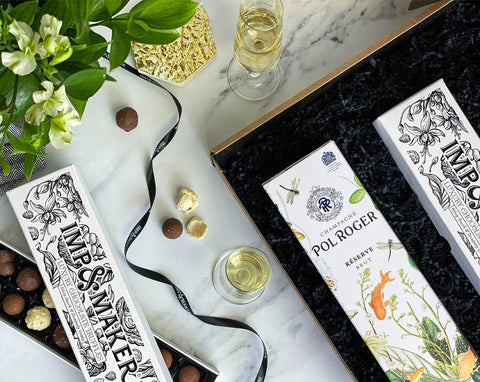The Bubbly Tale: A Deep Dive into the History and Fascinating Facts of Champagne
When it comes to celebrations, nothing quite sets the mood like the pop of a Champagne cork and the effervescent fizz that follows. This delightful beverage, synonymous with joy and luxury, has a rich history and a slew of intriguing facts that make it more than just a drink—it's a symbol of elegance and festivity.

A Glimpse into the Past
The story of Champagne begins in the picturesque vineyards of northeastern France. In the early Middle Ages, the region was renowned for its still wines. However, winemakers faced a peculiar problem: as temperatures dropped in winter, fermentation would halt, leaving the yeast dormant. When spring arrived, the fermentation process would resume, causing carbon dioxide to build up in the bottles, sometimes leading to explosions. Winemakers were perplexed until they discovered a unique solution: stronger glass bottles and tightly sealed corks, allowing the wine to undergo a secondary fermentation safely. This accidental discovery laid the foundation for the sparkling wine we know and love today.
The Birth of True Champagne – England or France?
Whilst it is widely thought it was a Benedictine monk named Dom Pérignon in the 17th Century who invented sparkling wines, it was actually an English scientist who should be credited with the discovery, as for decades prior, winemakers on this side of the Channel had been enjoying a sparking tipple. However Dom Pérignon is responsible for adding his finesse and skill, refining the production process and turning Champagne into the sophisticated beverage we recognise today. His meticulous blending of different grape varieties, including Chardonnay, Pinot Noir, and Pinot Meunier, set the standard for Champagne production. Additionally, he introduced the concept of using thicker glass to prevent bottles from exploding, thus ensuring a consistent and safe production method.
Champagne: A Royal Affair
Champagne’s association with royalty and nobility further elevated its status. Kings and queens across Europe were enamored with this bubbly elixir, and its popularity soared. The French king, Louis XIV, even declared Champagne the only wine suitable for the royal court. This regal endorsement cemented Champagne’s reputation as the drink of choice for celebrations and grand events.
The Traditional Champagne Method
One of the factors that set Champagne apart from other sparkling wines is the traditional method used in its production. After the initial fermentation, the wine is bottled with a mixture of sugar and yeast, triggering a second fermentation in the bottle. The yeast consumes the sugar, producing alcohol and carbon dioxide, which dissolves into the wine, creating those beloved bubbles. The bottles are then aged, allowing the flavors to mature and the bubbles to become finer and more delicate.

Fascinating Champagne Facts
Beyond its royal connections and exquisite taste, Champagne boasts an array of interesting facts that add to its allure:
- Terroir Matters: The unique combination of soil, climate, and grape varieties in the Champagne region gives the wine its distinct character. This concept, known as terroir, emphasises the importance of the environment in winemaking.
- Pressure Perfection: A bottle of Champagne holds approximately 6 bars of pressure, which is around three times the pressure inside a car tyre. This immense pressure is what causes the cork to fly out with a satisfying pop when opened.
- Champagne's Perfect Pairing: While Champagne is often enjoyed on its own, its versatility makes it an excellent companion to various dishes. From oysters and caviar to fried chicken and French fries, Champagne's acidity and effervescence cut through rich, fatty foods, cleansing the palate with each sip.
- Age-Worthy Elegance: While most Champagnes are meant to be consumed relatively young, vintage Champagnes can age gracefully for decades. These exceptional bottles develop complex aromas and flavors over time, making them highly prized by wine enthusiasts and collectors.
- Champagne Etiquette: There's a proper way to serve and enjoy Champagne. It should be chilled to around 45°F (7°C), and when pouring, the glass should be held at an angle to preserve the bubbles. Contrary to popular belief, shaking a Champagne bottle won’t make it explode, but it will lead to a foamy mess when opened.
Champagne, with its centuries-old legacy and enchanting effervescence, continues to captivate the hearts of people worldwide. Wherever you believe it was created, beyond its bubbles, it carries the tales of monks, kings, and winemakers who transformed a regional curiosity into a global icon of celebration. So, the next time you raise a glass of Champagne to toast a special moment, remember the centuries of craftsmanship and passion that went into creating that magical, sparkling elixir. Cheers to the enduring charm of Champagne!

If you’re looking to buy a Champagne gift, look no further. We’ve a collection of quality Champagne hampers, filled with luxury treats to surprise and delight any lucky recipient.








